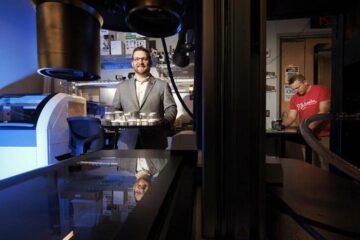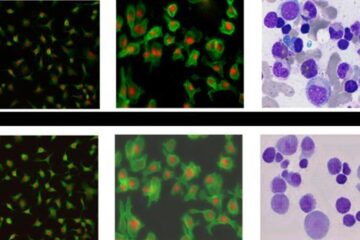Vascular Surgeons Ask, What's Next for Carotid Artery Stenting?

“Currently, the choice of CEA versus CAS in individual patients is based more on individual practitioner experience than on clear evidence-derived guidelines,” according to the new article by Drs. Philip P. Goodney and Richard J. Powell of Dartmouth-Hitchcock Medical Center, Lebanon, N.H. “Nonetheless, the popularity of less-invasive therapy combined with marketing of new CAS systems has increased the utilization of CAS.”
Drs. Goodney and Powell review and summarize the research evidence on CAS to prevent stroke in patients with narrowing (stenosis) of the carotid arteries. In the CAS procedure, an expandable mesh device called a stent is placed to increase blood flow through the area of stenosis.
Recently, several randomized controlled trials—the strongest category of scientific evidence—have directly compared the results of CAS and CEA. It has now been fairly well established that CAS and CEA yield comparable results in “high-risk” patients.
However, debate continues as to the role of CAS in the much larger group of “low-risk” patients. Some studies suggest that CAS and CEA produce similar results, but others have found a lower rate of serious complications and death in patients undergoing surgery.
Drs. Goodney and Powell note several limitations of the research that make it difficult to compare results between trials. Studies being conducted now will help to clarify the relative performance of the two techniques in both high-risk and low-risk patients. A key question will be whether CAS or CEA is the better choice for patients considered high-risk because of medical conditions.
Other issues that will need to be worked through include refinements in the design of CAS systems and the role of detailed imaging studies in guiding treatment decisions. “Ongoing randomized trials will help determine optimal revascularization strategies in the future,” the authors conclude.
Media Contact
More Information:
http://www.elsevier.com/All latest news from the category: Health and Medicine
This subject area encompasses research and studies in the field of human medicine.
Among the wide-ranging list of topics covered here are anesthesiology, anatomy, surgery, human genetics, hygiene and environmental medicine, internal medicine, neurology, pharmacology, physiology, urology and dental medicine.
Newest articles

Bringing bio-inspired robots to life
Nebraska researcher Eric Markvicka gets NSF CAREER Award to pursue manufacture of novel materials for soft robotics and stretchable electronics. Engineers are increasingly eager to develop robots that mimic the…

Bella moths use poison to attract mates
Scientists are closer to finding out how. Pyrrolizidine alkaloids are as bitter and toxic as they are hard to pronounce. They’re produced by several different types of plants and are…

AI tool creates ‘synthetic’ images of cells
…for enhanced microscopy analysis. Observing individual cells through microscopes can reveal a range of important cell biological phenomena that frequently play a role in human diseases, but the process of…





















